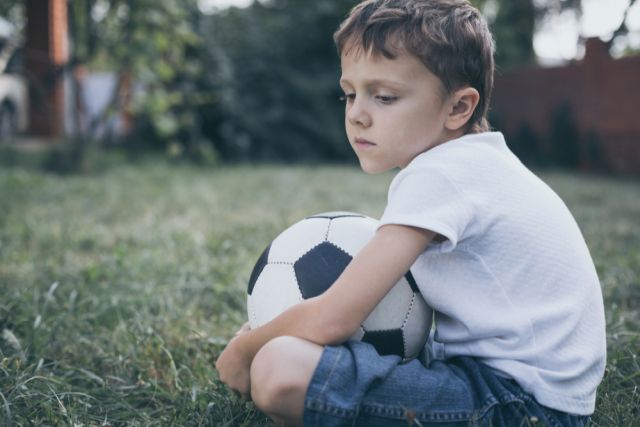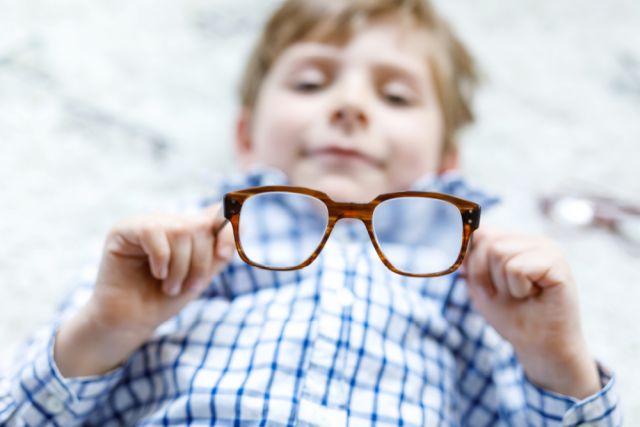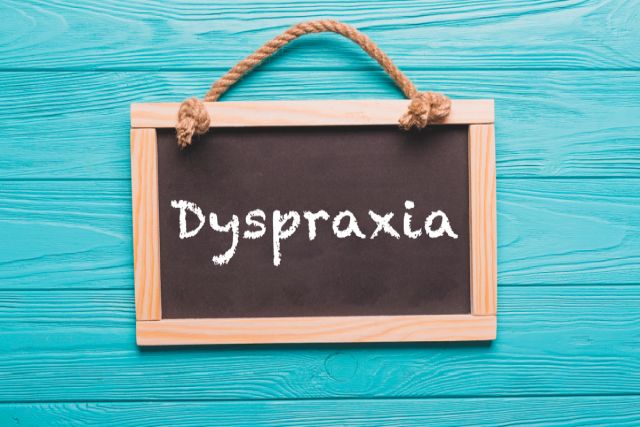ADHD & Attention Deficits, Dyspraxia / DCD, General Information
Parents’ Influence on Children’s Physical Activity
It seems there are two types of people. Firstly, there are those who have fond memories of middle school physical education (PE/gym) class. And then there are and those who work up a nervous sweat just reminiscing about it. What is parents’ influence on children’s physical activity?
Me? I loved my ballet classes, but when it came to the school’s PE class, I fall into the second category. I especially cringe when I think about when we played Rounders.
This is an easy version of baseball or cricket, where I had to catch or throw a ball. Ugh! It made my hands sweaty because I always missed.
Sure, I know that most kids don’t race off the bench in gym class to climb a rope or run laps. However, most children do enjoy a round of kickball or foot race.
So if your child seems to regularly avoid sport and physical education classes or you child hates physical activity in general, it might be a cause for concern. It could be childhood development issues and the potential signs are well worth knowing about.
Don’t allow childhood development issues ruin enjoyment in physical activity
After all, we all want our children to enjoy a romp from time to time! We want them to get out in the sunshine with their friends.
So if you’re disappointed that your son or daughter won’t even bother to try group activities or gets agitated when it’s required of them, it’s worth finding out if there’s an underlying reason you hadn’t before considered for why you child hates physical activity.

The reason this is such an important topic to me is that it can be so difficult to notice the subtle cues in a child’s behaviour that indicate the real reasons they aren’t enjoying physical activity.
Sometimes it’s more than just not wanting to be active. Sometimes they physically can’t accomplish certain tasks or mentally get overwhelmed by certain stimulations. It can simply come down to one of various possible childhood development issues.
So, your child might refuse to participate or find excuses to avoid joining in. The reason being that they want to avoid failure (like all of us!), and there may be underlying reason a child hates physical activity.
Reverting to non-physical activity
These children often revert to screens, books, indoor play, adult company or the company of younger children. Adults and younger children usually play a bit more slowly or less actively.
Their behaviour is more predictable (i.e. peers won’t run them over!) and they can’t compare their own poor skills to those of more coordinated peers.
Below is a list of reasons that some kids avoid sport and physical education, as well as ways to help.
I’ve compiled this list from personal experience working as a paediatric occupational therapist for, well, let’s just say decades! Not all of them relate to childhood development issues.
Side note: My personal mantra with occupational therapy is not to dwell too long on the “why” and simply press forward with the “how can we make it better?” So, whether you instantly recognize red flags below in your child or not, if you’re interested in moving your son or daughter forward on the right foot – literally – try a bit of one-on-one physical fun.
Consider a program like CoordiKids Home Course that you can do anywhere, anytime right from your mobile device. As the name implies, the goal is to increase your child’s coordination through targeted exercises for optimal physical and mental development.
8 Challenges That Might Explain Why Your Child Hates Physical Activities
1. Low muscle tone in a child causes fatigue and weakness
Not all bodies develop equally, so it’s perfectly natural for children’s muscle tone to develop differently throughout life. The importance of muscle tone, flexibility, and stability is the reason every school requires gym classes as part of a regular curriculum.
But, if your child’s muscles are not developed enough to keep up with the physical movements required in typical group play activities, gym class may not be enough.
It’s important to incorporate some one-on-one time with your child to work through specific exercises to identify weak areas and effectively strengthen them over time. This doesn’t necessarily mean there are childhood developmental issues, but it warrants being aware of the possibility.
Even 5 minutes a day with one type of simple exercise makes such a big difference in children’s development.
So much so that I created the Home Course series to allow all parents to access these specific types of exercises right at home. But, more on that further on.
2. General “unfitness” is a sad reality that haunts many modern children, too
Beyond just having weak muscle tone, some children have simply not experienced enough physical movement in the formative years from infancy to preschool.
It could be that their physical activity lacked variety, such as not having access to playgrounds and jungle gyms. This is a reality of children growing up in dangerous and impoverished conditions. Or, who did not have parents/guardians who acted as role models for creative movement and play.
3. Poor coordination is something so many of us can appreciate even as adults!
Many of us discover areas in our life that we’re less coordinated than others. Much like my experience coming to terms with being able to stand on one toe and pirouette, but not being able to catch and throw a ball with accuracy.
For some children, though, middle school physical education classes challenge their coordination in every possible way. Catching, throwing, kicking, jumping with both feet together.
Even simply running without getting foot-tied. If your little one is dealing with an underlying generalized coordination malfunction, he or she will either continue to get low marks in every area of PE class.
Or, they will find subtle ways to avoid the group activities altogether, and prospectively the child hates physical activity.
The only way to truly identify generalized coordination problems is to evaluate your child one-on-one.
Often you’ll need the intervention of a paediatrician or occupational therapist. Many childhood development issues can be easily addressed by paediatric occupational therapy.
Many of the activities in my Home Course program were developed as a result of seeing so many children who didn’t develop coordination skills early in life. That’s why several of the exercises start with very basic movements.
These are movements that grow more complex and dynamic from week to week to ensure stable development. Childhood development issues don’t need to hinder enjoyment and progress when there’s a program like CoordiKids Home Course available.
4. Eyesight and/or eye-tracking problems
Eyesight and/or eye-tracking problems are so subtle and sneaky that they are most often evaluated by a behaviour optometrist. The concept seems self-explanatory: having blurry vision or uncoordinated focus would obviously make it difficult to participate in sports.
However, noticing it as the underlying cause of sport avoidance is not so easy. The good news is those vision problems are usually treated very simply with early intervention.
And that’s why our team of OTs made sure to incorporate eye movement and tracking exercises in our Home Course program.

5. Poor balance
Poor balance is more than your child’s ability to do a jump-spin on a balance beam.
If he or she tends to:
- fall over even on flat ground,
- avoids climbing equipment,
- or is generally clumsy,
Developing his or her balance will do loads for their enjoyment of physical activities with friends.
Balance exercises are my favourite, as we always end up falling over into fits of giggles at some point or another!
6. Poor praxis or motor planning problems due to a condition called dyspraxia

Dyspraxia affects a person’s ability to coordinate movement or speech. It can also be referred to as developmental coordination disorder.
A person with dyspraxia has a lag in the process that allows the brain to signal a movement in the body. There are hiccups in the neurological process.
Dyspraxia is embodied in an awkward, clumsy, out-of-synch child. He or she probably has difficulty manipulating a racquet or bat.
Maybe he can shoot a goal when playing with Dad at home, but as soon as he joins up with a team, his struggles are more apparent.
Children with dyspraxia also tend to be disorganized. They are often losing things, untidy, forgetful, and so on.
As a matter of fact, if you’re curious at all about dyspraxia, you could read our article and use the checklist of symptoms to help you know whether to talk to your paediatrician about dyspraxia.
Dyspraxia is one of the childhood development issues that unfortunately is often masked, overlooked, or lumped with other over-arching learning disabilities.
7. Retained primitive reflexes
Retained primitive reflexes are one of the childhood development issues that can lead to developmental delays. These developmental delays can be related to disorders like ADHD, sensory processing disorder, autism, and learning disabilities.
Children facing this problem are clumsy because they have, in fact, immature physical movements.
You see, a baby is born with reflexes to protect himself. These reflexes usually become integrated smoothly into the nervous system through maturity and natural patterns of movements that a child experiences from infancy to toddlerhood.
However, environment (yes, walking rings, supportive seating for babies are to blame as well!) and some medical issues can prevent the normal development.
Medical issues such as general illness with low energy levels, multiple ear infections or upper respiratory infections, prevent the normal development.
This means that the child’s body never really developed the smooth neurological transitions properly. So, certain physical movements are still choppy, like an infant.
The persistence of primitive reflexes contribute to issues such as:
- coordination,
- balance,
- sensory perceptions,
- fine motor skills,
- sleep,
- immunity,
- energy levels,
- impulse control,
- concentration and
- all levels of social, emotional, and intellectual learning.
8. Sensory Modulation issues
Sensory Modulation issues make it incredibly difficult for children to participate in group activities. This is a specific type of sensory processing disorder in which your child’s neurological system goes into a sensory overload from noise, movement/activity, or even touch.
For example, lots of children with sensory issues have meltdowns in locker rooms and swimming pools. The noises of showers and dryers in the locker room. The smell of chlorine and the sensation of water.
The overwhelming amount of movement from so many people splashing and jumping in the pool. It could even be the starting gun or a scoring bell at sports matches.
Sometimes just getting dressed for the event creates issues. I’ve also worked with a few children who admitted that they couldn’t stand the feeling of being touched during contact sports.
Our Home Course program addresses these sensory development issues head-on by using fun exercises that mimic the natural progression of playful movements.
After all, a life lived without play is less than half-lived!
Play is the most important activity in which human beings engage throughout their lives. In early childhood (birth to 8 years of age) children move through increasingly complex stages of play.
These stages of play provide early and natural exposure to the sensory, perceptual, movement, thinking and interaction skills that are at the heart of traditional learning.
So, if you suspect your child is facing any of the issues mentioned in this list, do not despair. Consider booking a free consult with one of our paediatric occupational therapists to discuss your concerns and find out ways that could help a child who hates physical activity.
And be sure to check out the Home Course program that we’ve put together. We developed this program to ensure all kids have access anytime, anywhere to therapeutic movement activities to bridge any gaps in their natural development.
There is no reason to allow childhood development issues to limit your child’s enjoyment of physical activity.